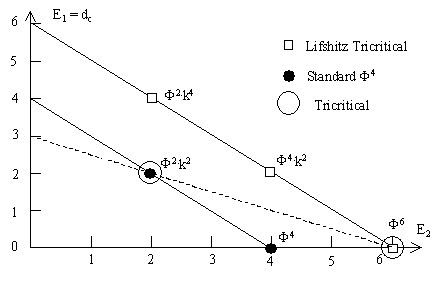 | ||
In the renormalization group analysis of phase transitions in physics, a critical dimension is the dimensionality of space at which the character of the phase transition changes. Below the lower critical dimension there is no phase transition. Above the upper critical dimension the critical exponents of the theory become the same as that in mean field theory. An elegant criterion to obtain the critical dimension within mean field theory is due to V. Ginzburg.
Contents
Since the renormalization group sets up a relation between a phase transition and a quantum field theory, this has implications for the latter and for our larger understanding of renormalization in general. Above the upper critical dimension, the quantum field theory which belongs to the model of the phase transition is a free field theory. Below the lower critical dimension, there is no field theory corresponding to the model.
In the context of string theory the meaning is more restricted: the critical dimension is the dimension at which string theory is consistent assuming a constant dilaton background without additional confounding permutations from background radiation effects. The precise number may be determined by the required cancellation of conformal anomaly on the worldsheet; it is 26 for the bosonic string theory and 10 for superstring theory.
Upper critical dimension in field theory
Determining the upper critical dimension of a field theory is a matter of linear algebra. It nevertheless is worthwhile to formalize the procedure because it yields the lowest-order approximation for scaling and essential input for the renormalization group. It also reveals conditions to have a critical model in the first place.
A Lagrangian may be written as a sum of terms, each consisting of an integral over a monomial of coordinates
see also the figure on the right. This simple structure may be compatible with a scale invariance under a rescaling of the coordinates and fields with a factor
Time isn't singled out here — it is just another coordinate: if the Lagrangian contains a time variable then this variable is to be rescaled as
One exponent, say
The condition
Naive scaling at the level of the Lagrangian doesn't directly correspond to physical scaling because a cutoff is required to give a meaning to the field theory and the path integral. Changing the length scale also changes the number of degrees of freedom. This complication is taken into account by the renormalization group. The main result at the upper critical dimension is that scale invariance remains valid for large factors
What happens below or above
It is instructive to see how the scale invariance at the upper critical dimension becomes a scale invariance below this dimension. For small external wave vectors the vertex functions
Naive scaling at
Lower critical dimension
The lower critical dimension
Thermodynamic stability of an ordered phase depends on entropy and energy. Quantitatively this depends on the type of domain walls and their fluctuation modes. There appears to be no generic formal way for deriving the lower critical dimension of a field theory. Lower bounds may be derived with statistical mechanics arguments.
Consider first a one-dimensional system with short range interactions. Creating a domain wall requires a fixed energy amount
A stronger lower bound
For systems with quenched disorder a criterion given by Imry and Ma might be relevant. These authors used the criterion to determine the lower critical dimension of random field magnets.
